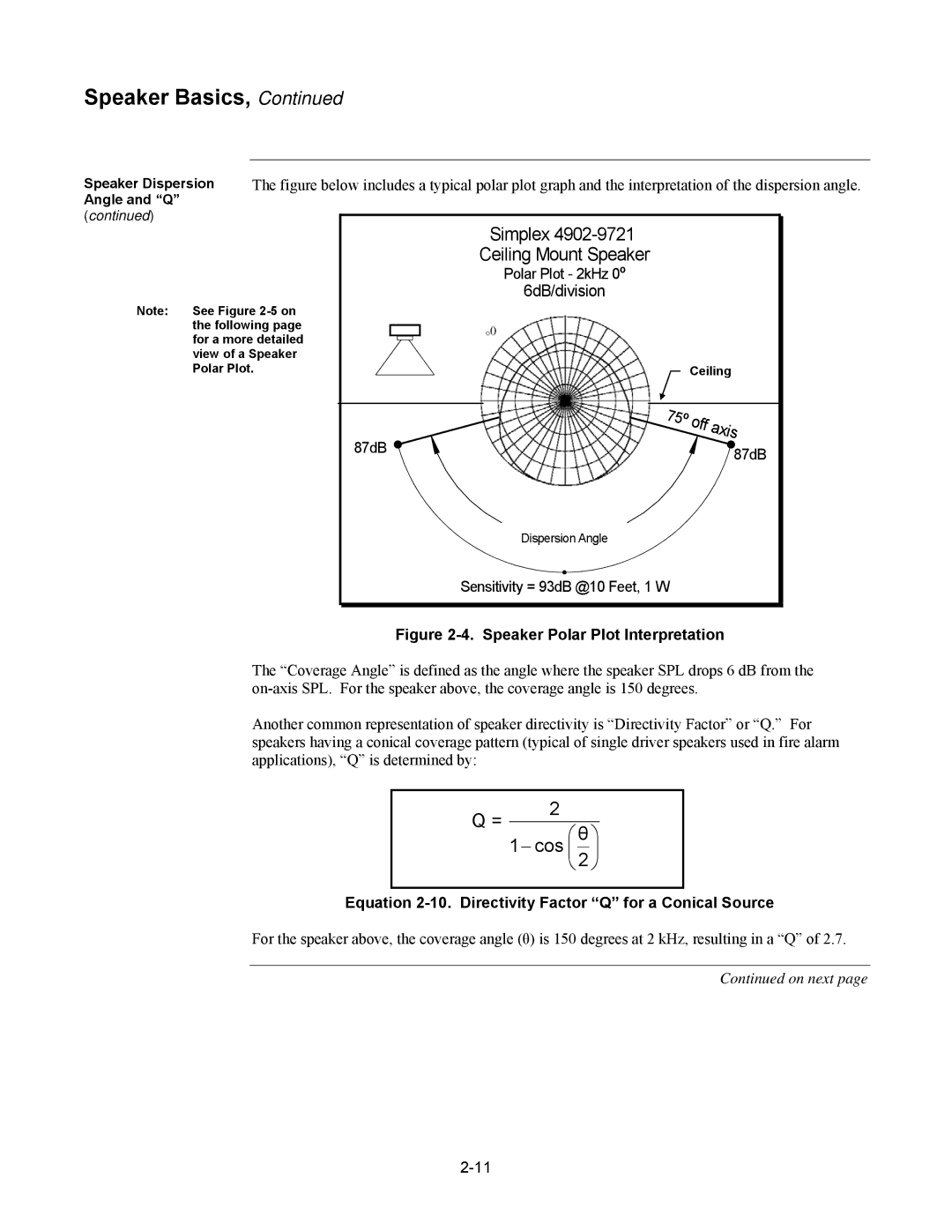
Speaker Basics, Continued
Speaker Dispersion | The figure below includes a typical polar plot graph and the interpretation of the dispersion angle. | |||||
Angle and “Q” |
|
|
|
|
|
|
(continued) |
|
|
| Simplex |
|
|
|
|
|
|
|
| |
|
|
|
| Ceiling Mount Speaker |
|
|
|
|
|
| Polar Plot - 2kHz 0º |
|
|
|
|
|
| 6dB/division |
|
|
Note: | See Figure |
|
|
|
| |
| the following page |
|
|
|
| |
| for a more detailed |
|
|
|
| |
| view of a Speaker |
|
|
|
| |
| Polar Plot. |
|
| Ceiling | ||
|
|
|
| 7 |
|
|
|
|
|
| 5º |
| |
|
|
|
|
| off axi | |
|
|
| 87dB |
|
| s |
|
|
|
|
| 87dB | |
|
|
|
|
|
| |
|
|
|
| Dispersion Angle |
|
|
|
|
|
| Sensitivity = 93dB @10 Feet, 1 W |
|
|
|
|
|
| Figure |
| |
|
| The “Coverage Angle” is defined as the angle where the speaker SPL drops 6 dB from the | ||||
|
|
| ||||
Another common representation of speaker directivity is “Directivity Factor” or “Q.” For speakers having a conical coverage pattern (typical of single driver speakers used in fire alarm applications), “Q” is determined by:
Q = | 2 |
|
| |
⎛ | θ ⎞ | |||
| ||||
| 1− cos ⎜ | 2 | ⎟ | |
| ⎝ | ⎠ | ||
Equation 2-10. Directivity Factor “Q” for a Conical Source
For the speaker above, the coverage angle (θ) is 150 degrees at 2 kHz, resulting in a “Q” of 2.7.
Continued on next page
